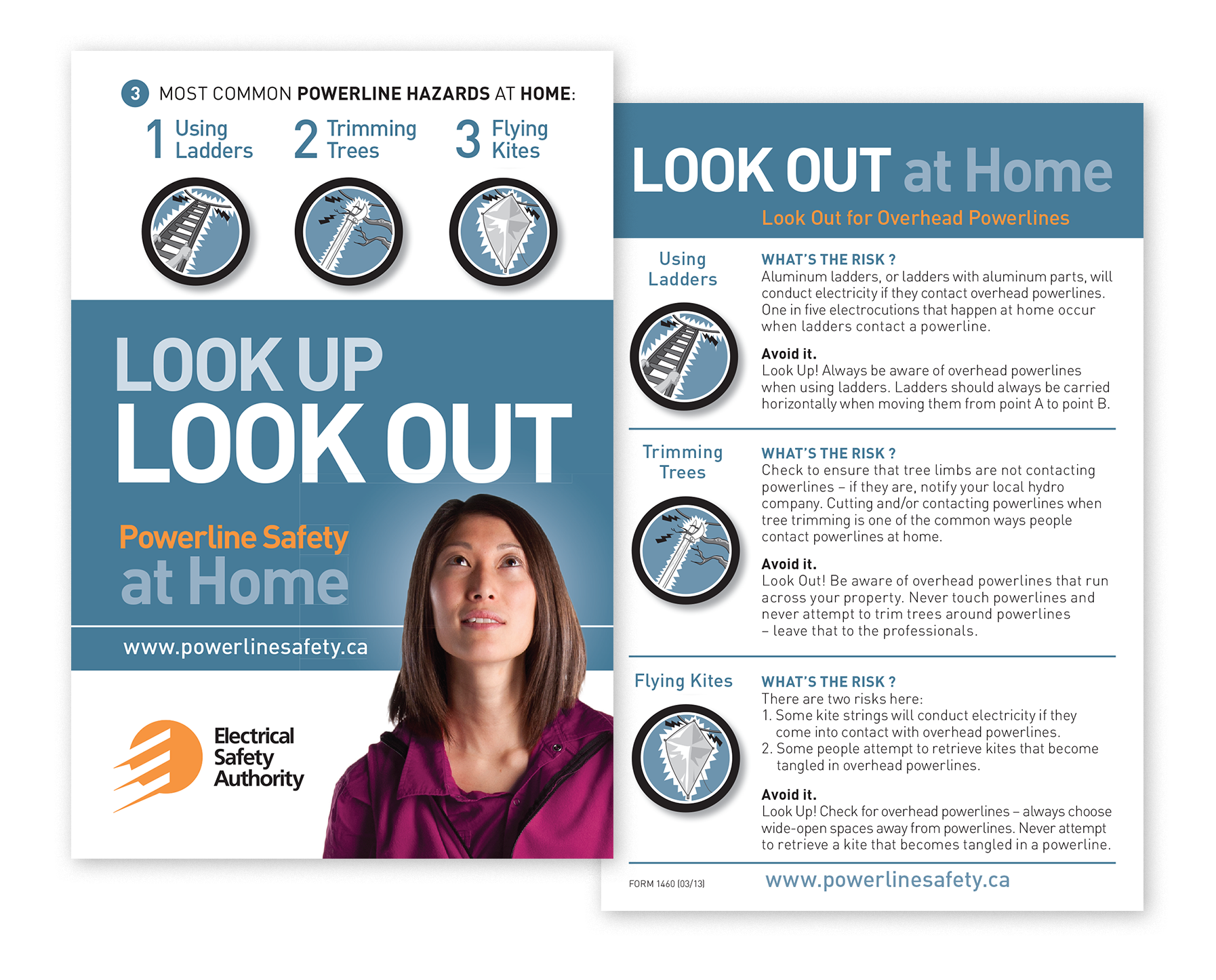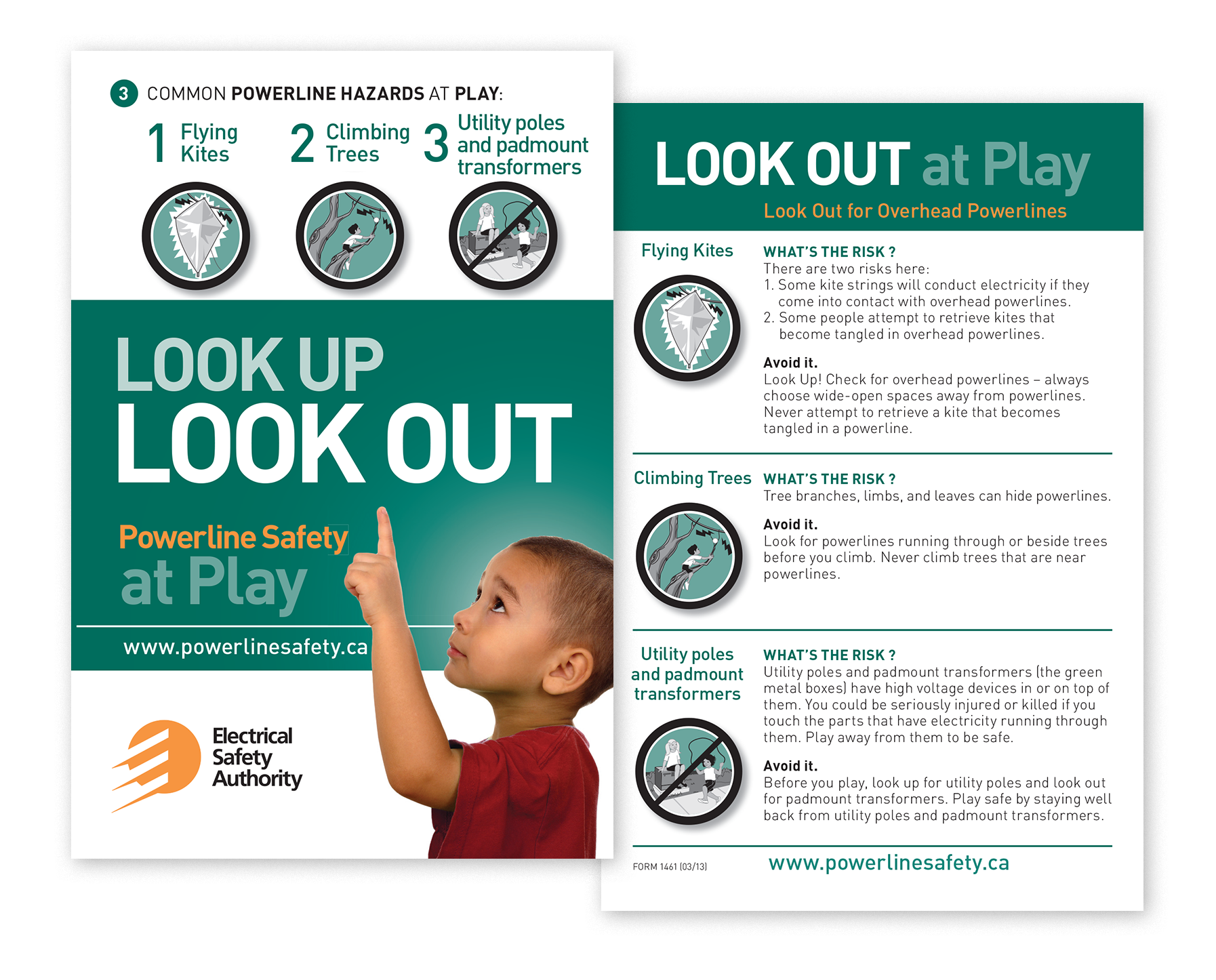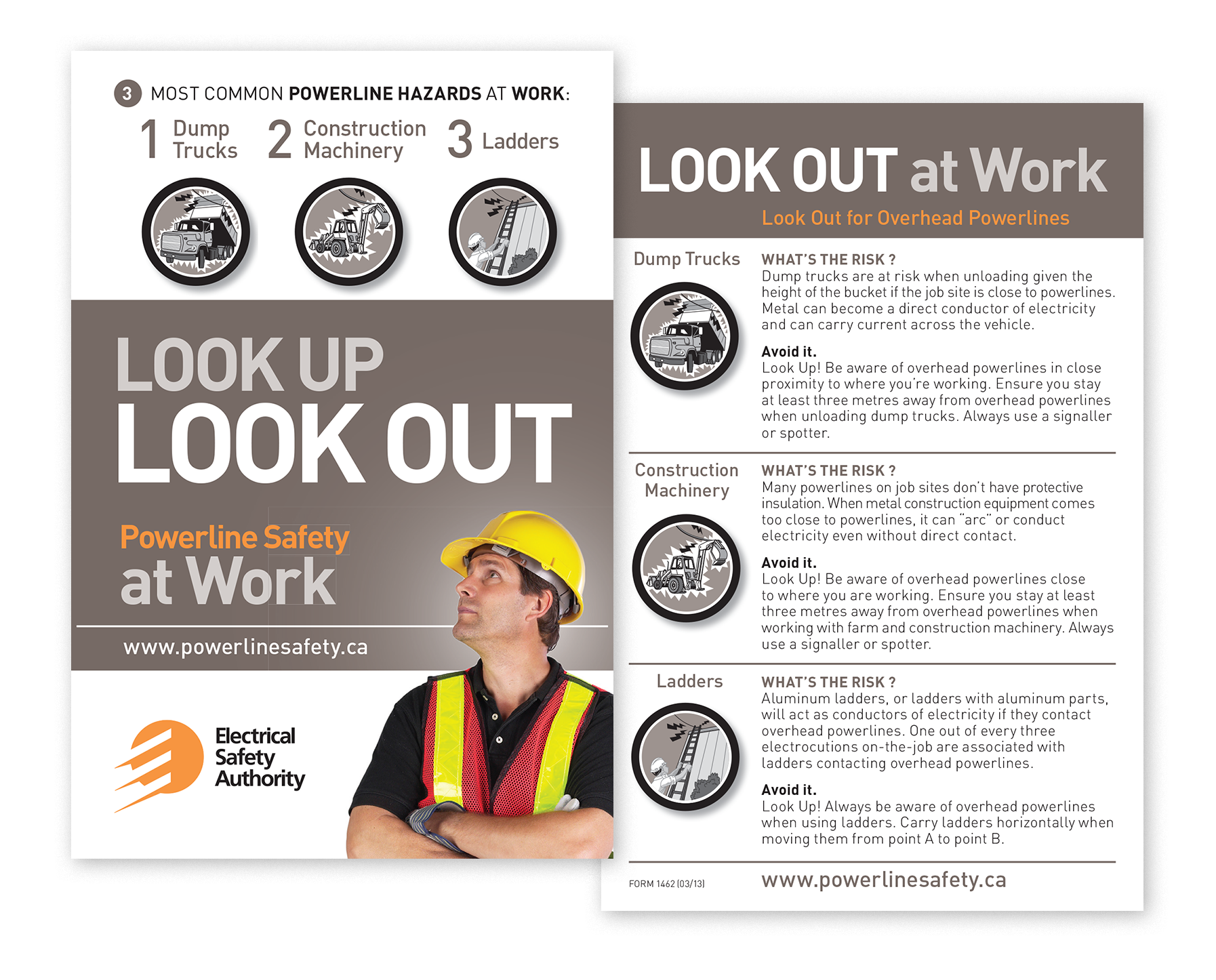Safety is our core.
It is important for everyone to play a part in ensuring safety in the Lakeland Power communities. Learn about the following potential hazards inside and outside your home and in our community.
Safety Inside the Home
Did you know that there are electrical hazards in your home? Some of them are hidden. The following is a list of indoor hazards and safety tips.
EXTENSION CORDS
- Extension cords are handy for temporary use only, so if you need power in that spot permanently, it is recommended to have a Licensed Electrical Contractor install a permanent wiring solution.
- Never remove the third prong – it’s there to prevent shocks!
- Don’t keep cords that are frayed, cracked, squished or heat up when in use.
- Keep extension cords away from heat and water.
- Avoid extension cords under carpets or under heavy furniture.
- Use the right one for the job as there are special extension cords rated for use with appliances like heaters and air conditioners, and also ones specifically for outdoor use.
PLUGS AND OUTLETS
- Never overload electrical outlets by plugging in too many plugs – use an approved power bar.
- Replace any broken or missing switchplate covers right away.
- Install Ground Faults Circuit Interrupters (GFCIs) in your bathrooms and laundry rooms, and outdoors.
- Regularly test GFCIs according to the manufacturer’s instructions (usually monthly).
LIGHT FIXTURES
- Use the right potlight for the job as there are ones for use in ceilings that have insulation and ones that don’t. Using the wrong one could cause a fire.
- Never exceed the recommended wattage bulb and choose the recommended bulb type in all fixtures.
- Don’t remove the insulation or any other component of a light fixture when you’re installing it, and this includes the insulation in flush mount fixtures and the grounding wire in all new fixtures.
PRODUCT SAFETY
- Make sure that all electrical appliances have recognized approval marks to ensure they meet the electrical safety requirements for Ontario.
- Make sure electrical cords on your appliances aren’t loose or damaged.
- Misuse of electrical appliances can cause fires – find cooking safety tips from the Ontario Association of Fire Chiefs (OAFC).
YOUR HOME’S ELECTRICAL SYSTEM
Don’t ignore these electrical hazard warning signs:
- Dim, flickering or surging lights.
- Fuses that constantly blow or breakers that often trip.
- Outlets that don’t work when the fuse is replaced or breaker is reset
- Switches or fuses that are hot to the touch (turn them off immediately) or a hot, burning smell where you can’t find the source.
Safety Outside the Home
Safety outside of your home is as important as inside. Learn about these potential outdoor hazards and how you can keep your property safe.
YARD AND GARDEN
- Trimming trees, cleaning eaves troughs or inspecting the roof can bring you close to overhead powerlines. Be aware of where they cross your yard and keep yourself and your ladder or pruner at least three meters away.
- Avoid working near the service mast attached to your home when cleaning eavestrough or doing roof work.
- When you move a ladder, always carry it horizontally, not vertically.
- Call before you dig. Contact Ontario One Call to mark where electrical cables are buried before you do any major digging for deck supports, fence posts and other projects.
- Plug in power tools safely outside.
- Hydro poles are for power and nothing else. Don’t mount satellite receivers or clotheslines on them, post lost-pet or garage sale signs or use them as a trellis for climbing vines.
AROUND THE POOL
- Water and electricity don’t mix. All outdoor outlets should be equipped with Ground Fault Circuit Interrupters (GFCI), especially around the pool. They should also have weatherproof covers to prevent moisture from getting in.
- Poolside is no place for electrical equipment, so keep all electronics far away.
USE EXTENSION CORDS SAFELY
Extension cords are a convenient way to bring power to your backyard, deck, dock or campsite, but if you take safety shortcuts you could turn your plans upside down. Follow this simple principle: ‘right cord, right place, right use’ to stay safe.
Right Cord
- First of all, pick the right extension cord for your needs and don’t try to make it work with the wrong one.
- Use only extension cords rated for outdoor use. They are designed to resist outdoor wear and conditions. Don’t take the shortcut of using an indoor cord or power bar even for a short period of time as it could cause a shock, electrocution or a fire, and it’s a violation of the Ontario Electrical Safety Code.
- Check the power capacity of your cord to ensure it’s the same or greater than the item you’re planning to plug in. For electric power tools, be sure to use a heavy duty extension cord.
- Don’t string multiple extension cords together. Not only is it unsafe, but it will also reduce their power capacity and your electronic tools or gadgets won’t work properly.
- Always use grounded (three-pronged) cords and never remove the grounding pin from the plug. It’s there to protect you.
- If you’re using a cord for the first time, do a careful check to ensure it’s in good condition. Extension cords stored outdoors in the winter can crack, which could result in a shock, electrocution or fire.
Right Place
- Plug your grounded outdoor extension cord into a Ground Fault Circuit Interrupter (GFCI)-protected electrical outlet that has been installed in accordance with the Ontario Electrical Safety Code. If the outlet isn’t GFCI protected, you can get a portable GFCI outlet adapter at your local home improvement retailer or hardware store.
- Never run extension cords through doors or windows even for a short period of time. The cord can quickly become damaged from rubbing against the door and window edges or pinched in the frame.
Right Use
- Don’t use outdoor extension cords as long-term power sources. The longer they’re left out, the more risk there is of damage or wear. If you need ongoing power on your deck, dock, or yard, have permanent outdoor wiring and outlets installed by a Licensed Electrical Contractor.
- Never bury extension cords or electrical conductors in the ground. Only specially rated underground conductors can be buried and it must be done in accordance with the Ontario Electrical Safety Code.
- Don’t staple extension cords in place or run them over nails because the cord can easily be damaged.
- Use only electrical appliances and tools that are rated for outdoor use.
Safety in the Community
In addition to ensuring electrical safety inside and outside of the home, it is also important for everyone to play a part in ensuring safety in the Lakeland Power communities.
Learn about the following potential hazards in your community and how you can help to keep it safe.
LANDSCAPING AND TREE TRIMMING
It’s important to ensure that around your property trees and other plants don’t grow too close to powerlines and other electrical equipment.
- Tree limbs that come down during a storm or high winds can bring powerlines with them causing a power outage and leave live powerlines on the ground which is a severe safety hazard.
- Tree branches that touch powerlines can also cause a fire and create an electric shock hazard if someone touches the tree.
- Locate overhead powerlines before trimming or prunning trees.
- Contact Lakeland Power to remove, prune and trim trees around overhead powerlines.
- Look up when doing tree and property maintenance.
- Locate underground powerlines prior to excaving and removing tree trunks and/or roots, contact Lakeland Power to request a ‘locate’ to indentify underground powerlines. Allow a minimum of two weeks to receive all locates. All locates must be received prior to excavation.
PLANTING NEW TREES AND SHRUBS
If you’re planting new trees on your property, make sure to check the following safety tips.
- Locate overhead powerlines.
- Locate underground powerlines prior to digging or excaving to plant trees by contacting Lakeland Power to identify its undergound powerlines.
- ELECTRICAL EQUIPMENT : minimum clearance when planting near pad mounted equipment.
- TRANSFORMERS: 3 meters is required in front of the door(s) and 1.5 meters on the sides and back.
- SWITCHGEAR: 3 meters is required in the front and back doors, and 1.5 meters on the sides.
- Check municipal, regional and township by-laws for specifications.
- Check with Lakeland Power for its planting requirements under or around overhead powerlines and electrical equipment, including underground powerlines.
- Check with Lakeland Power to identify easements that might apply.
TREE PLANTING AND TRIMMING GUIDELINES
Refer to the following Guidelines from the Electrical Safety Authority when it comes to tree trimming and planting.
SUBSTATIONS
Substations are part of the electrical distribution system that delivers electricity to our customers. Fences around the stations protect the public from the high voltage equipment inside.The signs at our fenced-in electrical facilities warn the public of danger and to stay out.
The high voltage electricity inside a substation makes it a dangerous place for people, who are not authorized to be inside the fence and don’t have the right training or protective gear.
Occasionally, items like soccer balls are accidentally kicked inside the substation fence. If this happens do not attempt to climb the fence to retrieve your ball. Contact Lakeland Power at 1-888-282-7711 and we will be happy to retrieve the ball for you.
On occasion, vandals purposely open gates or cut holes in the fence, creating a significant safety risk for themselves and the public.
If you see suspicious activity around a substation, contact the local police. If you notice a substation fence that has been vandalized, stay clear and call Lakeland Power immediately at 1-888-282-7711 to report the hazard.
CREWS AT WORK
Crews are often set up on the roadway performing emergency work, pole replacements service work, etc. For the public and workers safety, temporary pedestrian and traffic changes are put in place to accommodate this work. For safety reasons, please slow down and proceed with caution through these worksites and obey all road condition signs.




